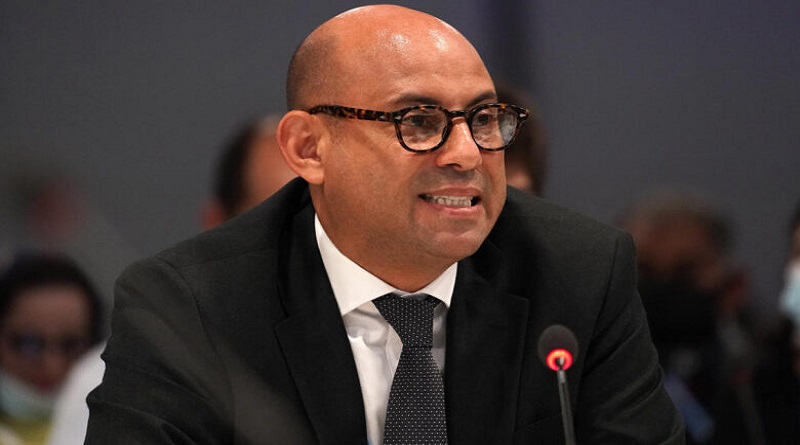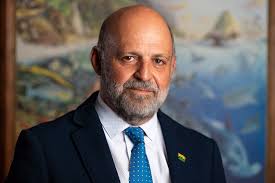Enhancing access and increasing impact: the role of the multilateral climate funds
Joint declaration of the heads of the Adaptation Fund, the Climate Investment Funds, the Global Environment Facility and the Green Climate Fund
The need for collective, urgent and ambitious action on climate is greater than ever before. As the results of the first global stocktake make clear, the world is not on track to meet the goals of the Paris Agreement. While progress is seen in some areas, much more is needed to reach net zero and adapt to climate impacts. A rigorous “all of economy, all of society” approach is needed across all systems and sectors.
Climate finance for developing countries plays the key role in this transition. Simplified and improved access to climate finance can allow for the more rapid deployment of urgently needed finance while also better serving local needs. The current international climate financial architecture needs to develop to keep “fit-for-purpose” to deal with the growing multiple challenges. A shift to a system-wide climate finance architecture where all actors work together and better in a more synergized and harmonious way is needed.
With our unique mandates and comparative advantages, the multilateral climate funds (MCFs) can facilitate broad changes and contribute to the reform of the international climate finance architecture. Our experience, innovative approaches and concessionary funding can help other international financial institutions, including the multilateral development banks (MDBs), to mitigate financial risks, lower investment costs, and scale up access to finance, including from private sources of capital.
At COP 26 in Glasgow, our four funds jointly committed to work together to accelerate the transition to a green, inclusive and resilient economy. Since then, we have developed our collective work on the three pillars of partnership we highlighted: exploring synergies in programming; monitoring, evaluation and learning; and communication and outreach.
The COP 28 conference marks a crucial moment to step up our efforts. We need to work together better and deepen the collaboration between our funds.
Within the scope of the mandates given by our respective governing bodies, today we are announcing our commitment to develop an ambitious and concrete action plan to enhance access to climate finance and increase the collective impact of our action.
We will strengthen the complementarity and coherence between our funds and move towards harmonizing our procedures to improve and streamline modalities of access to finance.
Across all our work, the funds will develop a common concept of complementarity and coherence. This will aim to avoid duplication of efforts, enhance collaboration, streamline processes, and ensure that we work together effectively towards common goals. It involves strategic programming, clear communication, and harmonized approaches to optimize the use of resources and achieve greater collective impact in combating climate change.
We will ensure our objectives are aligned and our efforts are coordinated, leveraging more funds and delivering adaptation support for the most vulnerable so that our activities have a greater impact.
We welcome the plans of the G20 Sustainable Finance Working Group to enhance access to the climate funds and we commit to engage with this process and contribute to the planned independent review in 2024.
- Enhancing access to climate finance
As climate funds, we have different but complementary mandates. We are committed to ensuring that our activities are also complementary to each other.
We will enhance access to climate finance by working together across the areas of our activities.
We will seek to increase collaboration within our capacity-building support, recognizing that developing countries need the capacity to turn climate plans into projects, and to move from ambition to action.
We will aim to develop greater synergies within our programming and between our theories of change, and to scale up projects. The MCFs have a number of collaborative programming initiatives which are already realizing strong results. We will develop this work and further explore the potential for joint programming initiatives that could allow us to deploy our collective resources at a larger scale and with greater efficiency.
We will ramp up our collaborative work on monitoring, evaluation and learning, including through the development of common indicators, alignment of our results frameworks, and the development of a common database for climate projects taking into account innovative tools.
We will move towards harmonization of our procedures and processes, recognizing that complex application procedures, which are different for each fund, can be a significant barrier to accessing to climate finance.
- Increasing our impact
To date, the multilateral climate funds have together channelled over USD 32 billion (about USD 197 billion with co-financing) of resources for climate and sustainability action in developing countries.
But much more is required to deliver the transformation to a low-emission, climate-resilient future with social and environmentally sustainable development, and the protection of biodiversity. The international community has committed to increasing the flows of climate finance. The USD 100 billion per year target agreed at COP 15 in Copenhagen must be realized, and a new collective goal established for climate finance. The commitment made at COP 26 to double the amount of adaptation finance by 2025 must be achieved. More broadly, it is essential to align global financial flows with the 1.5°C target under the Paris Agreement which will require moving from billions to trillions.
In line with these targets, the total amount of resources channelled through the multilateral climate funds should be significantly increased. In turn, the multilateral climate funds are committed to ensuring that those resources are used strategically to achieve the greatest possible impact.
Based on our respective business models, we will use our resources to mobilize greater financial flows from the private sector and other external sources of finance. We will facilitate blended finance and explore risk mitigation and other innovative financial instruments, and will commit to raise the impacts of our concessional resources, by scaling up co-financing of our projects and programmes. Collaboration between the MCFs will be pursued through knowledge exchange between the funds to attract the private sector.
We will collaborate with MDBs and other financial institutions to leverage our respective strengths, expertise and financial tools, blending finance, addressing gaps in financing, mobilizing resources more effectively and maximizing the impact of international financial flows.
Compared to mitigation finance, adaptation finance is at an extremely low level, despite the urgency of the climate crisis. The role of MCFs to enhance adaptation finance is very significant. We will increase our support to help the most vulnerable adapt to the impacts of climate change and enhance collaboration in this area.
We can realize these ambitions with the full engagement and support of our governing bodies, and with increased collaboration between those bodies.
We will develop a detailed action plan with specific proposals to achieve these goals. We will bring proposals to our governing bodies by the second half of 2024 with the aim of delivering an endorsed action plan in time for COP 29.
The Adaptation Fund has since 2010 committed over US$ 1 billion for climate change adaptation and resilience projects and programmes, including 150 concrete, localized projects in the most vulnerable communities of developing countries around the world with over 40 million total beneficiaries. It also pioneered Direct Access and Enhanced Direct Access, empowering countries to access funding and develop local projects directly through accredited national implementing entities.
The Climate Investment Funds (CIF) is one of the largest multilateral climate funds in the world. It was established in 2008 to mobilize finance for low-carbon, climate-resilient development at scale in developing countries. 15 contributor countries have pledged over US$11 billion to the funds. To date CIF committed capital has mobilized more than US$64 billion in additional financing, particularly from the private sector, over 70 countries. CIF’s largescale, low-cost, long-term financing lowers the risk and cost of climate financing. It tests new business models, builds track records in unproven markets, and boosts investor confidence to unlock additional sources of finance. Recognizing the urgency of CIF’s mission, the G7 confirmed its commitment to provide up to $2 billion in additional resources for CIF in 2021.
The Global Environment Facility (GEF) is a family of funds with 186 member countries dedicated to confronting biodiversity loss, climate change, pollution, and strains on land and ocean health. Its grants, blended financing, and policy support help developing countries address their biggest environmental priorities and adhere to international environmental conventions. Over the past three decades, the GEF has provided more than US$23 billion and mobilized US$129 billion in co-financing for more than 5,000 national and regional projects.
The Green Climate Fund (GCF) is the world’s largest dedicated climate fund. GCF’s mandate is to foster a paradigm shift towards low emission, climate-resilient development pathways in developing countries. GCF has a portfolio of USD 13.5 billion (USD 51.8 billion including co-financing) delivering transformative climate action in more than 120 countries. It also has a readiness support programme that builds capacity and helps countries develop long-term plans to fight climate change. GCF is an operating entity of the financial mechanism of the United Nations Framework Convention on Climate Change (UNFCCC) and serves the 2015 Paris Agreement, supporting the goal of keeping average global temperature rise well below 2°C.




